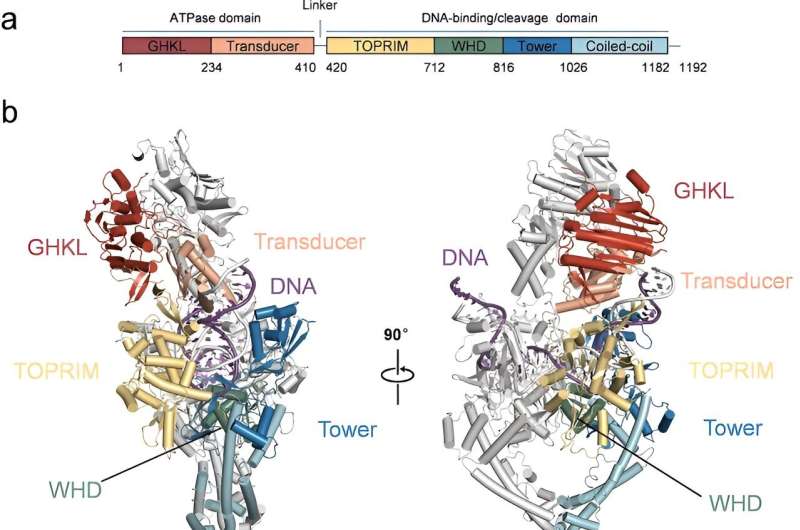This article has been reviewed according to Science X's editorial process and policies. Editors have highlighted the following attributes while ensuring the content's credibility:
fact-checked
peer-reviewed publication
trusted source
proofread
Potential drug targets identified in African swine fever virus enzyme study

African swine fever virus is the only mammalian infectious virus that encodes type II DNA topoisomerase and has caused serious damage to the global swine industry in recent years. Safe and effective commercial vaccines and drugs are still lacking.
Therefore, research on the type II DNA topoisomerase pP1192R encoded by the virus is useful to provide an important theoretical basis for the development of anti-African swine fever drugs.
According to a study published in Nature Communications on May 30, researchers led by Prof. Rao Zihe from the Institute of Biophysics of the Chinese Academy of Sciences have used various experimental techniques, including single-particle cryo-electron microscopy, X-ray crystallography and biochemical experiments, to unravel the conformational dynamics of the full-length African swine fever virus-encoded type II DNA topoisomerase pP1192R in complex with nucleic acids and verify its enzymatic activity in vitro.
In this study, high-resolution structures of three different conformations of the pP1192R protein in the apo state were obtained, showing different opening directions of the central structural domain of the protein.
The researchers overcame the instability challenge of the N-terminal ATPase domain by adding specific nucleic acid molecules and, after sample optimization, capturing the structure of the full-length protein complex bound to linear DNA.
The structure showed significant bending of the double-stranded DNA, causing a local transition from the "B-form" to the "A-form" configuration.
They directly observed the image of the protein binding plasmid-DNA crossover using atomic force microscopy and confirmed this binding feature. Through molecular docking, the researchers docked two different types of type II DNA topoisomerase inhibitors as potential starting points for drug design.
This study comprehensively elucidates the structure and function of the virus-encoded type II DNA topoisomerase through various experimental techniques, reveals the molecular mechanism of the virus type II DNA topoisomerase, provides potential inhibitor design strategies, lays a theoretical foundation for the prevention and control of the African swine fever epidemic, and offers potential intervention strategies to mitigate the impact of the African swine fever virus.
More information: Jingyuan Cong et al, Structural insights into the DNA topoisomerase II of the African swine fever virus, Nature Communications (2024). DOI: 10.1038/s41467-024-49047-w
Journal information: Nature Communications
Provided by Chinese Academy of Sciences




















